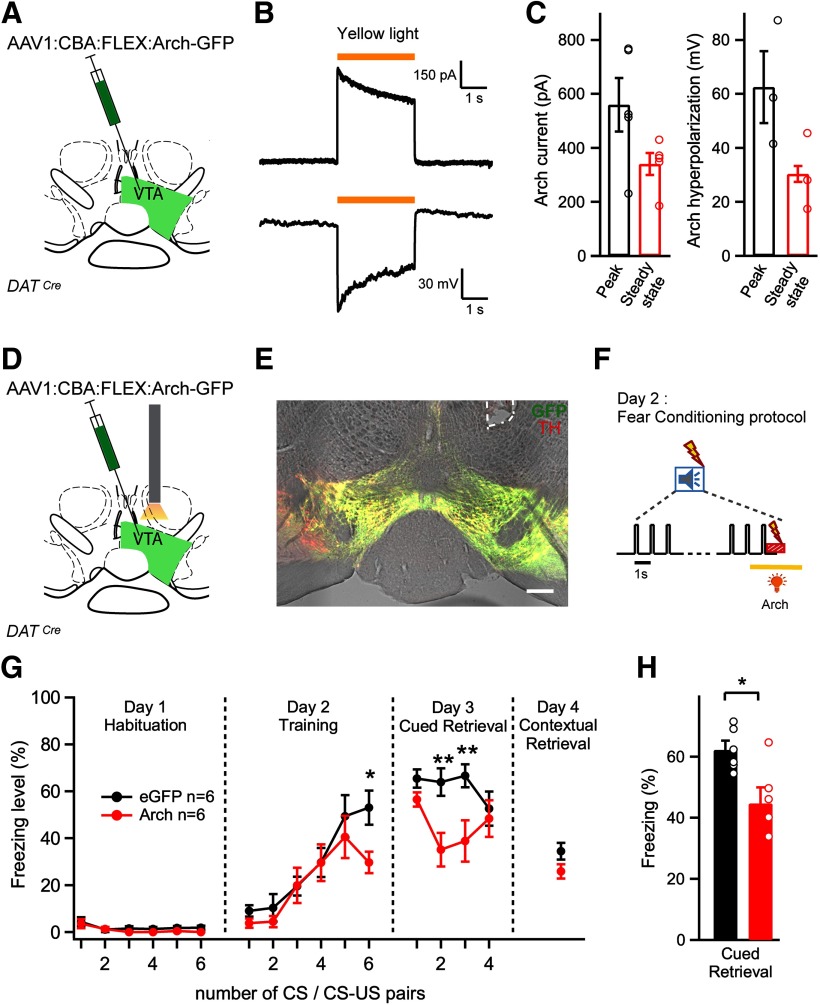Figure 4.
Optogenetic inhibition of VTA dopamine neurons during the footshock decreases auditory-cued fear memory. A, Schematic of the experimental approach for B, C. An AAV1:CBA:FLEX:Arch-eGFP vector was injected unilaterally into the VTA. B, Current (top; holding potential, −60 mV) and membrane potential responses (bottom) evoked by yellow light (λ = 595 nm) in an Arch-expressing DAT neuron. C, Quantification of the peak and steady-state current response (left) and hyperpolarization (right) from n = 5 recordings in N = 3 mice. D, Schematic of the experimental approach for E-H. A stereotactic injection of the Cre-dependent Arch-eGFP vector into the VTA of DATCre mice was followed by unilateral optic fiber implantation above the injection site. E, Post hoc histologic verification of Arch-GFP expression and optic fiber placement (white dashed line) in the VTA of one example mouse. Red represents TH immunohistochemistry signal. Green represents fluorescence of Arch-eGFP. Scale bar, 200 µm. F, Schematic of yellow laser light illumination during the CS-US pairing protocol. The tone block (n = 30 tone beeps of 0.1 s at 1 Hz) is followed by a 1 s footshock. Yellow laser light (λ = 561 nm) is applied for 3 s starting 1 s before the footshock to activate Arch. G, Average time course of freezing level in Arch-expressing mice (n = 6, red), and in eGFP-expressing control mice (n = 6; black). *Significance of the photoinhibition effect as assessed by Bonferroni post hoc test at the indicated time points, following a two-way repeated-measures ANOVA. H, Percentage of freezing during cued fear memory retrieval averaged over four CS presentations on day 3 (N = 6 and N = 6 mice in the test and control group; p = 0.0134,t test). One data point from a mouse in the control group showed unusually low freezing on retrieval (26%) and was removed from the dataset. Error bars indicate mean ± SEM. *p < 0.05, **p < 0.01.

